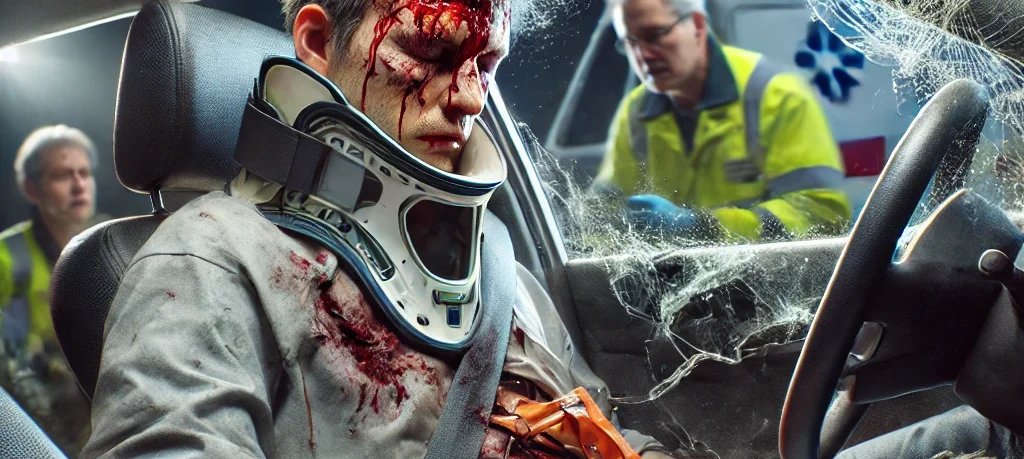By Dansker & AspromonteJanuary 25, 2016
What is a Traumatic Brain Injury (TBI)?
Living brain tissue is damaged by an external force or motion usually accompanied by an unconscious state, amnesia or a coma. These states of altered consciousness can last shorter (minutes, days), or longer terms (weeks, months or indefinitely). Side effects of TBIs can be physical, speech and language, cognitive and behavioral functioning impairments. Forces from an automobile accident are a common cause for traumatic brain injuries (TBI).
For a free legal consultation, call (212) 732-2929
Brain Injuries (Head Injuries) Not Categorized as TBI
- caused by insufficient blood supply
- malignancy
- birth trauma
- toxic substances
- congenital disorders
- disease-producing organisms
- degenerative processes
Traumatic Brain Injuries Categorized
Different levels of TBIs are categorized depending on the severity of the brain’s impacted area(s). For example, there may be no fracturing of the skull from the blunt force impact but one or more traumatic injuries to the brain can be present.
Closed Brain Injury – no foreign object enters through the skull into the brain. A violent blow to the head or sudden, severe motion happens to the brain causing it to ‘slam’ against the skull when it makes contact with another object, for instance the dashboard or windshield of a car. Predicting side effects is not as exact as with open brain injuries, due to extensiveness is not always as definitive and clear.
Open (Penetrating) Brain Injury – a foreign object fractures, and enters through the skull into the brain injuring the brain’s tissue. Predicting disabilities from these types of direct and localized injuries are relatively more exact than in closed traumatic brain injuries.
Most Common Types of Traumatic Brain Injuries
A concussion occurs when movement or sudden momentum change causes an impact. The brain’s blood vessels can stretch and damage cranial nerves. For example, direct blows to the head or whiplash type injuries from a car accident.
- most common type of TBI
- unconsciousness (no more than 20 minutes) may occur
- consciousness with a sense of dazed or “punch drunk” may occur
- may or may not show up on a CAT or other diagnostic image testing
- skull fracture may or may not be present
- brain bleeding and/or swelling may or may not be present
- blood clot(s) can form – can be fatal
- diffuse axonal type injury damage can be temporary or permanent
- healing can take a few months up to a few years
A contusion is bleeding (or a bruise) to the brain.
- result of a direct impact to the head
- large contusions may require surgery to remove
A Coup-Contrecoup Injury is one that has contusions to both (opposites) sides of the brain where dual impact “action” occurred.
- blunt force trauma – more serious type of TBI
- impact generates enough force to injure the site of impact on the opposite brain site – tearing the brain way from the skull’s opposite side
Diffuse Axonal Injury is common when the head is shaken or a strong rotation of the head occurs.
- skull movement is rapid – brain is unmoving causing brain structure tears
- extensive nerve tissue tears can release brain chemicals causing additional injuries
- brain’s chemical processes and regular communication is disturbed – can cause temporary/permanent widespread damage, coma or death
- multiple tear areas can produce a mixture of functional impairments
Click to contact our personal injury lawyers today
Severe TBI Potential Effects
Severe, non-fatal TBIs may result in extended amount of unconsciousness (coma) and/or amnesia. One year after patients hospitalized post a TBI, 43% (almost half) are reported to have a related disability.1 As of the year 1999, approximately 5.3 million Americans were living with TBI-related disabilities.2
TBIs can potentially lead to issues ranging from short-or-long term affecting:
- Cognitive Function – attention and memory
- Motor Function – impaired coordination and balance, extremity weakness
- Sensation – vision, impaired perception and touch, hearing
- Emotion – anxiety, depression, personality changes, aggression, impulse control
The TBI-related deaths percentage (31.8%)3 from automobile accidents, is the highest of all TBI-related deaths among all age groups. Full recovery from serious TBI from head injuries is often unachievable inflicting significant life-long consequences on victims. TBI victims may want to consider getting help from a law firm. Traumatic brain injury lawyers can possibly win a settlement, helping to alleviate the financial burden of relationship and lifestyle changes, and medical expenses.
References
- Selassie AW, Zaloshnja E, Langlois JA, Miler T, Jones P, Steiner C. Incidence of Long-term disability following Traumatic Brain Injury Hospitalization, United States, 2003 J Head Trauma Rehabil 23(2):123-131,2008.
- Thurman D, Alverson C, Dunn K, Guerrero J, Sniezek J. Traumatic brain injury in the United States: a public health perspective. J Head Trauma Rehabil 1999;14(6):602-615.
- Faul M, Xu L, Wald MM, Coronado VG. Traumatic brain injury in the United States: emergency department visits, hospitalizations, and deaths. Atlanta (GA): Centers for Disease Control and Prevention, National Center for Injury Prevention and Control; 2010.
Our attorneys are here to help with car accident injuries, construction accidents claims, and other personal injury cases.
Call or text (212) 732-2929 or complete a Free Case Evaluation form

